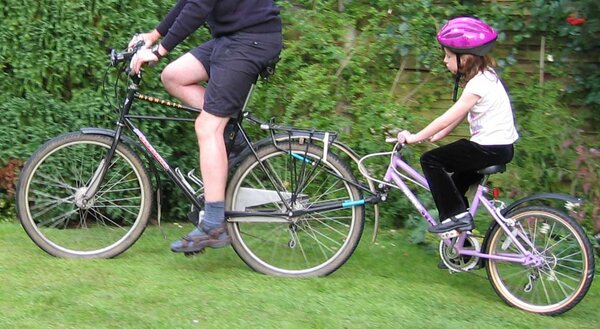- Feedback
- View
This all begs the question, where do cycling innovations come from?
Is it from mainstream cyclists? Yes, manufacturers listening to the views of their customers can result the improvement of a product, but is unlikely to result in any radical innovation. The bicycle is a well developed 'mature product' and so is it is extremely difficult to reinvent. It can be and has been done, but it needs a rare combination of technical know-how and creativity. Pedersen, Moulton, Andrew Ritchie as well as many other less successful but equally far-seeing individuals have done this, but are mostly from outside of the mainstream cycling industry.
Do major innovations pour from the big, usually insular and inward looking mainstream manufacturers? Well not often but do sometimes when manufacturers collaborate with outside innovators. Like Mike Burrows working with Giant or Shimano and Suntour working with the Marin Pioneers. Of course manufacturers do constantly introduce new designs, technologies and materials, but this is often used as of a marketing technique than a source of real and radical innovation.
Most big cycle and cycle component manufacturers in Britain went out of business or moved abroad years ago, with their failure to innovate being one of the main reasons for failure.
Small innovative companies?
Over the years I have been a customer of several small and highly innovative cycling companies who have the ideas but not the ability to market their products widely. Some of their ideas like twist grip gear changers, micro-drive derailleur drive-chains, elliptical chain-rings, 650b/700c rim sizes etc eventually became mainstream products years or decades later.
For the 'Next Big Thing' in cycling to be more than just the usual re-issuing of old ideas then the big manufacturers will need to work with the enthusiastic innovators of the cycling world.
Designers and inventors would of course expect be reimbursed for their inventive ideas and development time, whilst manufacturers will try to use the ideas for free. They even buy up patents they never intend to use, so that they can stop other manufacturers from producing products derived from them.
The bottom line is that it is profit that that drives the cycling industry, not innovation.
Is it from mainstream cyclists? Yes, manufacturers listening to the views of their customers can result the improvement of a product, but is unlikely to result in any radical innovation. The bicycle is a well developed 'mature product' and so is it is extremely difficult to reinvent. It can be and has been done, but it needs a rare combination of technical know-how and creativity. Pedersen, Moulton, Andrew Ritchie as well as many other less successful but equally far-seeing individuals have done this, but are mostly from outside of the mainstream cycling industry.
Do major innovations pour from the big, usually insular and inward looking mainstream manufacturers? Well not often but do sometimes when manufacturers collaborate with outside innovators. Like Mike Burrows working with Giant or Shimano and Suntour working with the Marin Pioneers. Of course manufacturers do constantly introduce new designs, technologies and materials, but this is often used as of a marketing technique than a source of real and radical innovation.
Most big cycle and cycle component manufacturers in Britain went out of business or moved abroad years ago, with their failure to innovate being one of the main reasons for failure.
Small innovative companies?
Over the years I have been a customer of several small and highly innovative cycling companies who have the ideas but not the ability to market their products widely. Some of their ideas like twist grip gear changers, micro-drive derailleur drive-chains, elliptical chain-rings, 650b/700c rim sizes etc eventually became mainstream products years or decades later.
For the 'Next Big Thing' in cycling to be more than just the usual re-issuing of old ideas then the big manufacturers will need to work with the enthusiastic innovators of the cycling world.
Designers and inventors would of course expect be reimbursed for their inventive ideas and development time, whilst manufacturers will try to use the ideas for free. They even buy up patents they never intend to use, so that they can stop other manufacturers from producing products derived from them.
The bottom line is that it is profit that that drives the cycling industry, not innovation.
